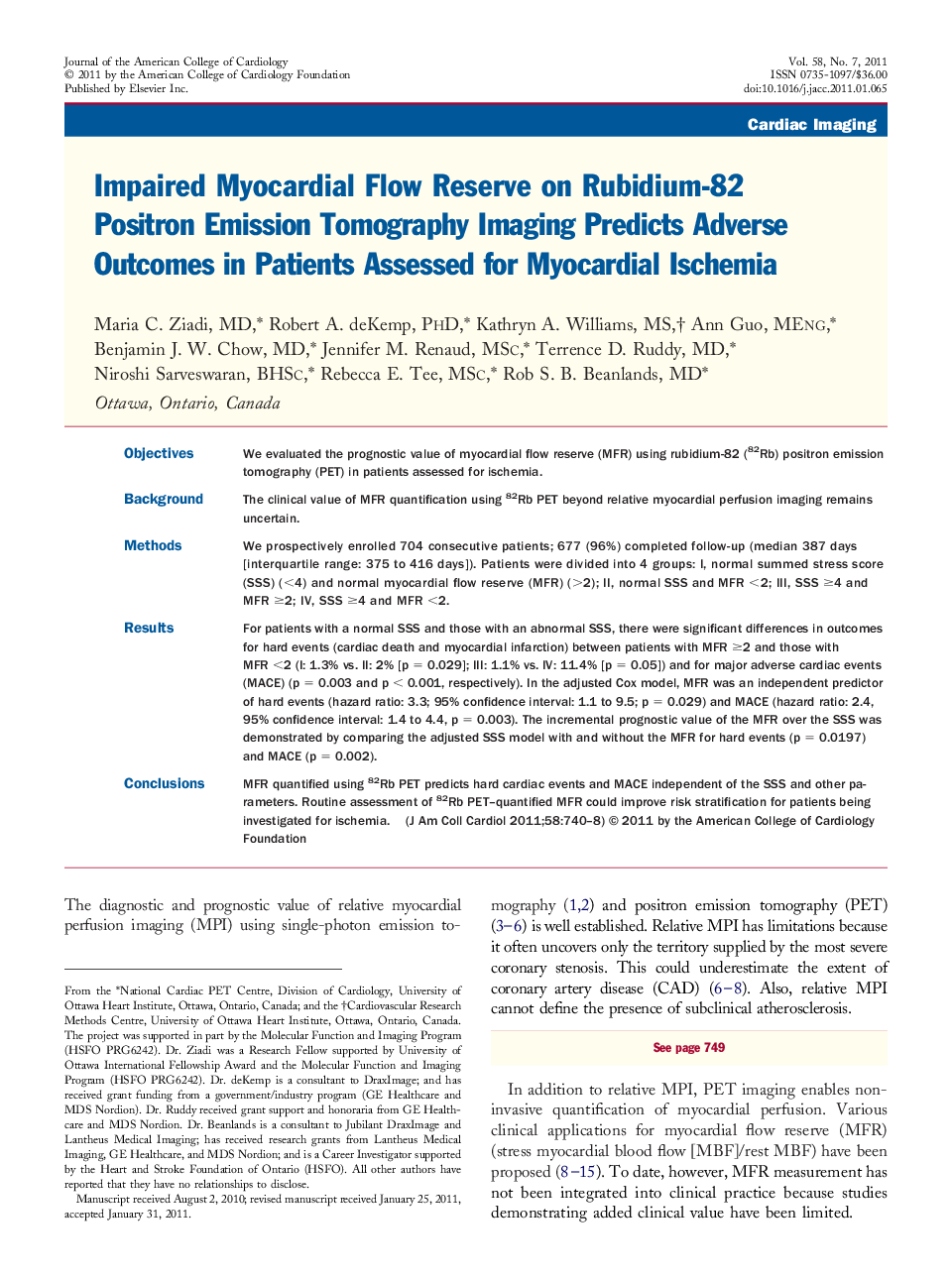| Article ID | Journal | Published Year | Pages | File Type |
|---|---|---|---|---|
| 2948175 | Journal of the American College of Cardiology | 2011 | 9 Pages |
ObjectivesWe evaluated the prognostic value of myocardial flow reserve (MFR) using rubidium-82 (82Rb) positron emission tomography (PET) in patients assessed for ischemia.BackgroundThe clinical value of MFR quantification using 82Rb PET beyond relative myocardial perfusion imaging remains uncertain.MethodsWe prospectively enrolled 704 consecutive patients; 677 (96%) completed follow-up (median 387 days [interquartile range: 375 to 416 days]). Patients were divided into 4 groups: I, normal summed stress score (SSS) (<4) and normal myocardial flow reserve (MFR) (>2); II, normal SSS and MFR <2; III, SSS ≥4 and MFR ≥2; IV, SSS ≥4 and MFR <2.ResultsFor patients with a normal SSS and those with an abnormal SSS, there were significant differences in outcomes for hard events (cardiac death and myocardial infarction) between patients with MFR ≥2 and those with MFR <2 (I: 1.3% vs. II: 2% [p = 0.029]; III: 1.1% vs. IV: 11.4% [p = 0.05]) and for major adverse cardiac events (MACE) (p = 0.003 and p < 0.001, respectively). In the adjusted Cox model, MFR was an independent predictor of hard events (hazard ratio: 3.3; 95% confidence interval: 1.1 to 9.5; p = 0.029) and MACE (hazard ratio: 2.4, 95% confidence interval: 1.4 to 4.4, p = 0.003). The incremental prognostic value of the MFR over the SSS was demonstrated by comparing the adjusted SSS model with and without the MFR for hard events (p = 0.0197) and MACE (p = 0.002).ConclusionsMFR quantified using 82Rb PET predicts hard cardiac events and MACE independent of the SSS and other parameters. Routine assessment of 82Rb PET–quantified MFR could improve risk stratification for patients being investigated for ischemia.
